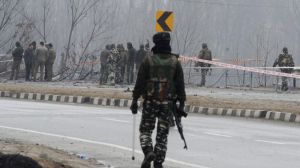BMC schools’ costly lesson
JANUARY 4: In Mumbai, civic schools have enough teachers. What they need is sufficient students. An audit report of the Municipal Chief Audi...

JANUARY 4: In Mumbai, civic schools have enough teachers. What they need is sufficient students. An audit report of the Municipal Chief Auditor, P C Pisolkar, has revealed that there were 1,316 excess teachers in BMC-run schools in 1995-96. This figure is in direct contrast to student strength in civic schools which saw a sharp fall in the year 1995-96. From 7,41,546 students in 1993-94 it came tumbling down to 5,92,659 in 1995-96.
Quoting figures pertaining to the requirement of teachers based on the one-teacher-one-classroom formula, the audit report says that while 16,760 teachers would have sufficed in 1995-96, the actual strength of BMC teaching staff was 18,076. The audit report further reveals that to accommodate this excess staff BMC incurred an expenditure of Rs 10.65 crore on their salaries and other perks. In some cases salaries were paid to non-existent staff.
A fine example of how the BMC ignored its own projections was the Gilder Lane Municipal Secondary School. While the sanctioned strength of teachers for this school was 51, the school employed 58 teachers. Also, though the post of the librarian was not sanctioned, it was on the pay-roll and so were the posts of two supervisors.However, the rather paradoxical trend of increasing strength of teachers on the one hand, and the decreasing number of students on the other has persisted for a few years now. The number of schools (as on April 1, 1986) increased from 1,254 to 1,263, the enrolment of students to these schools actually saw a fall from 6,86,289 to 6,72,665 students – a decrease of 13,624. The efforts of the education department and a UNICEF project undertaken during 1991-95 failed to reverse this trend.Under the UNICEF project primary school students (I to IV standards) were provided a daily diet in the schools across the city. The idea was to provide an incentive to parents, especially those belonging to the lower strata of the society, to send their children to schools. While the administration spent Rs 310.80 lakh on the scheme, it made little impact.
Arresting the drop-out rate was one of the primary objectives of the five-year UNICEF project. But the target was never achieved and the steps taken through community development officers succeeded only in readmitting 4,822 students in 23 administrative wards.Pisolkar minces no words in criticising the administration for its lapses. “The administration needs to review the staffing pattern . Even the bi-annual statistical reports submitted by the research officer do not tally with the figures of the education department. It indicated a deficit of 661 teachers and also an excess of 210 teachers. The audit fails to understand as to how the teaching staff could be in excess and short of requirement at the same time.”
Photos





- 01
- 02
- 03
- 04
- 05


























